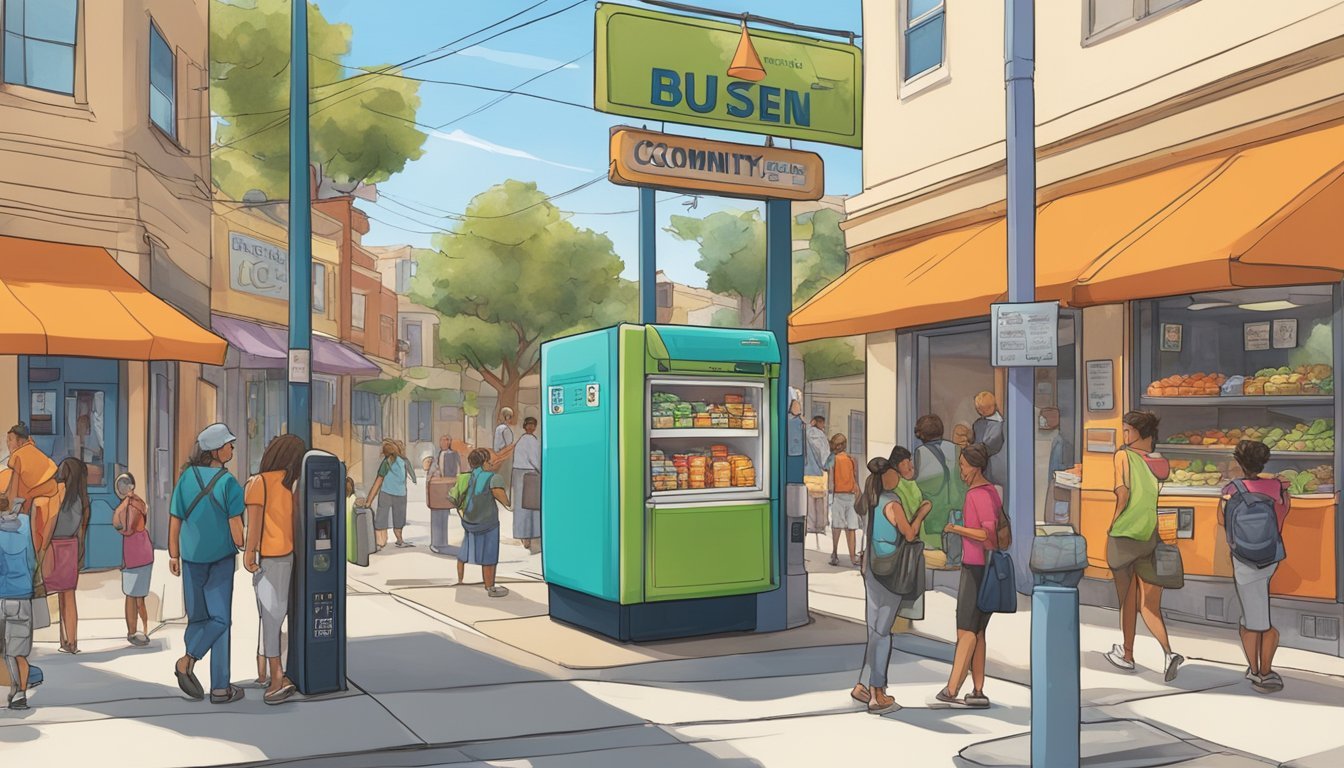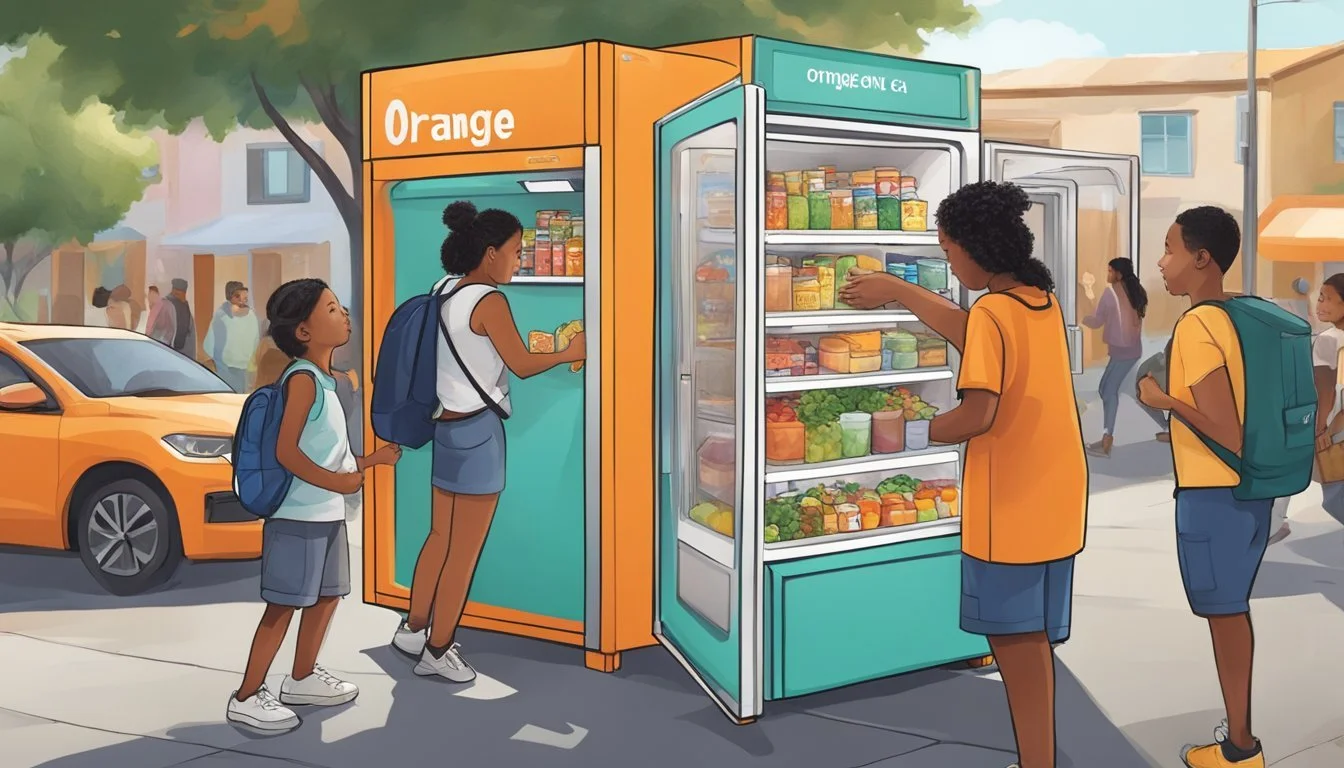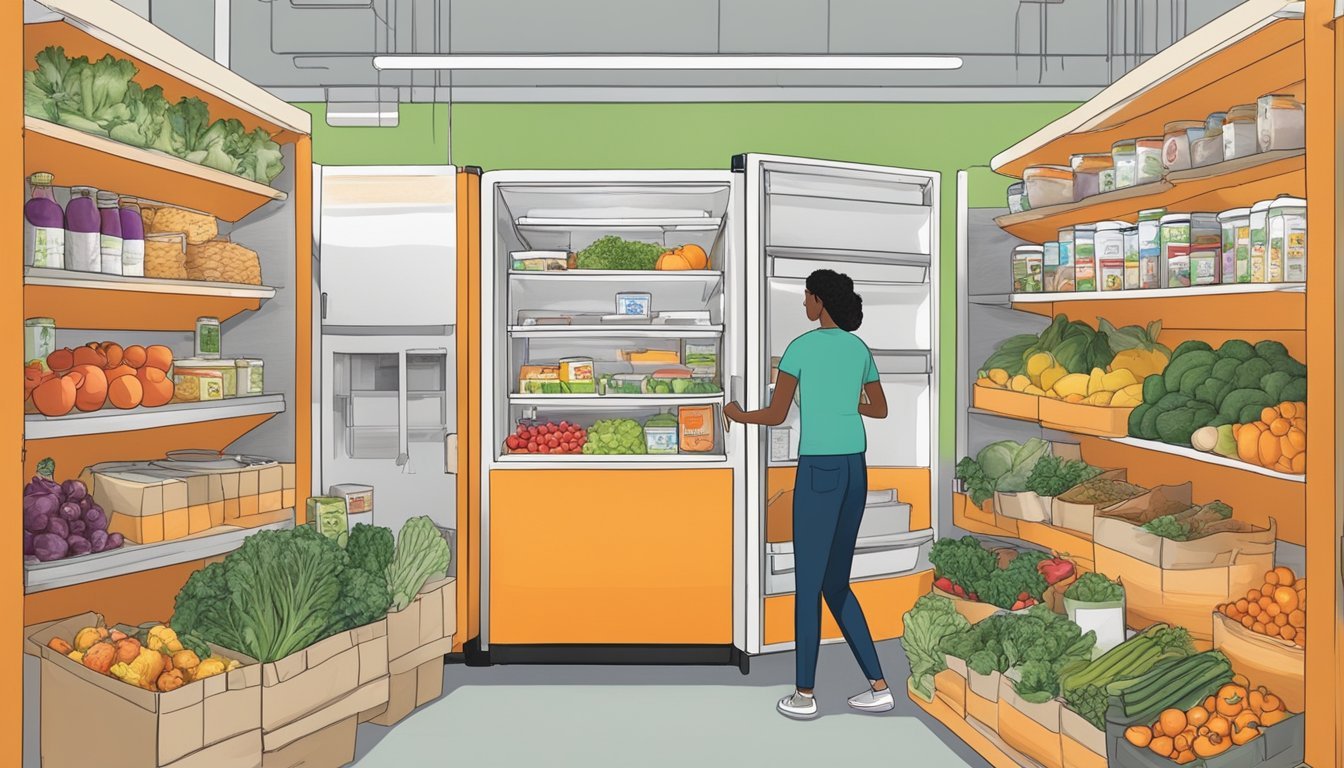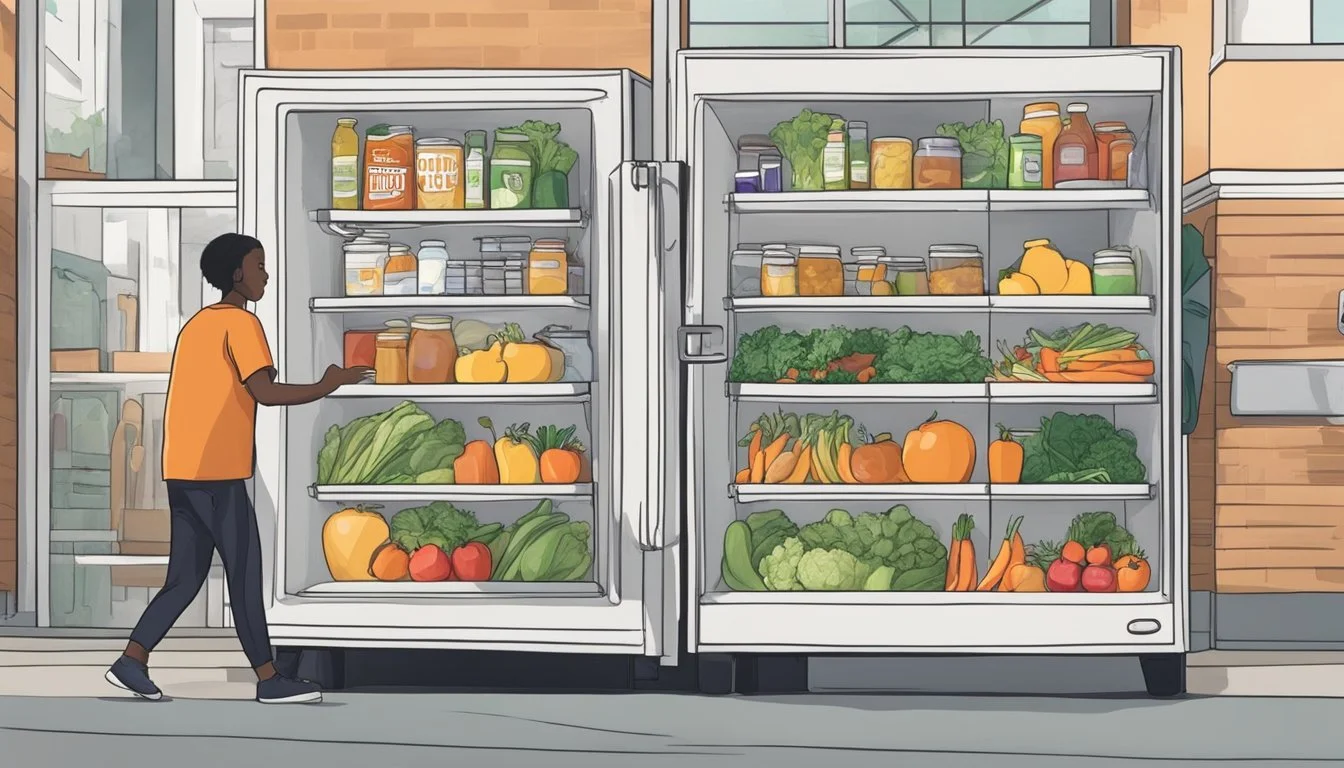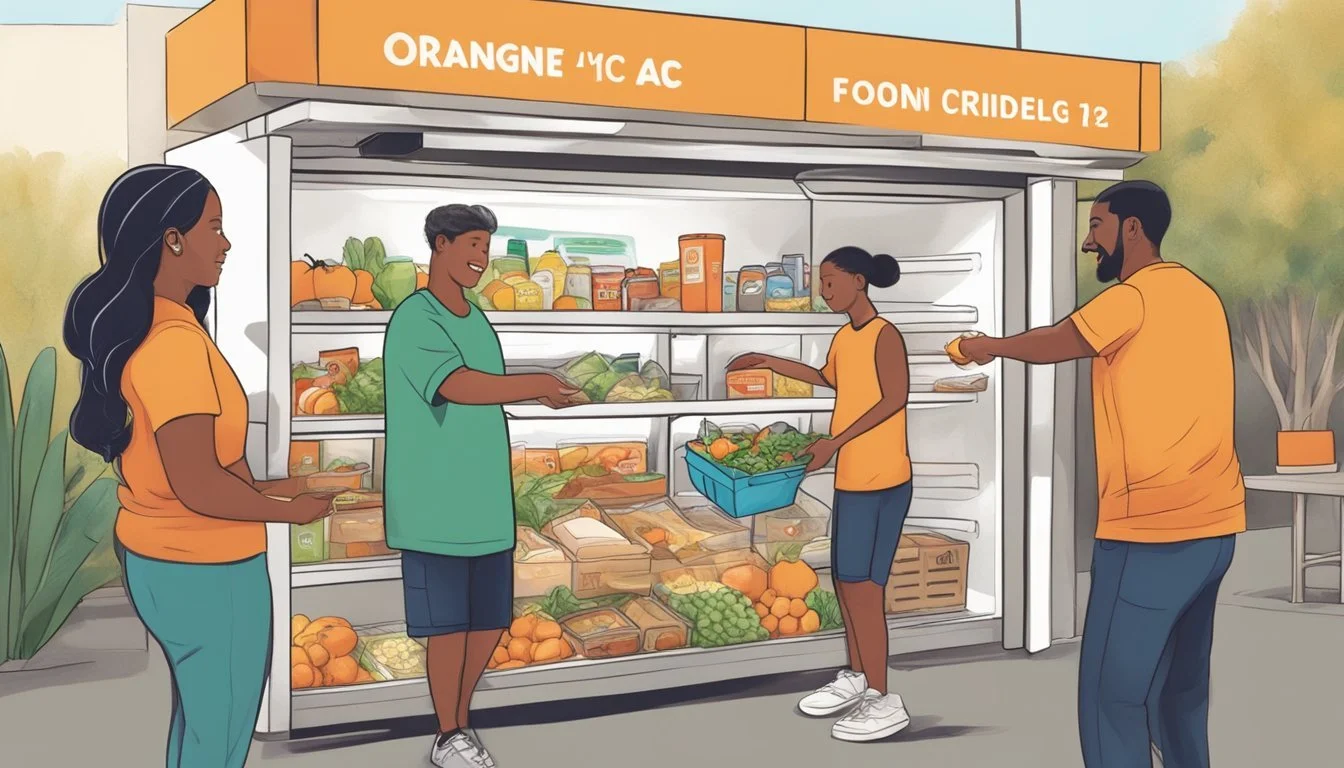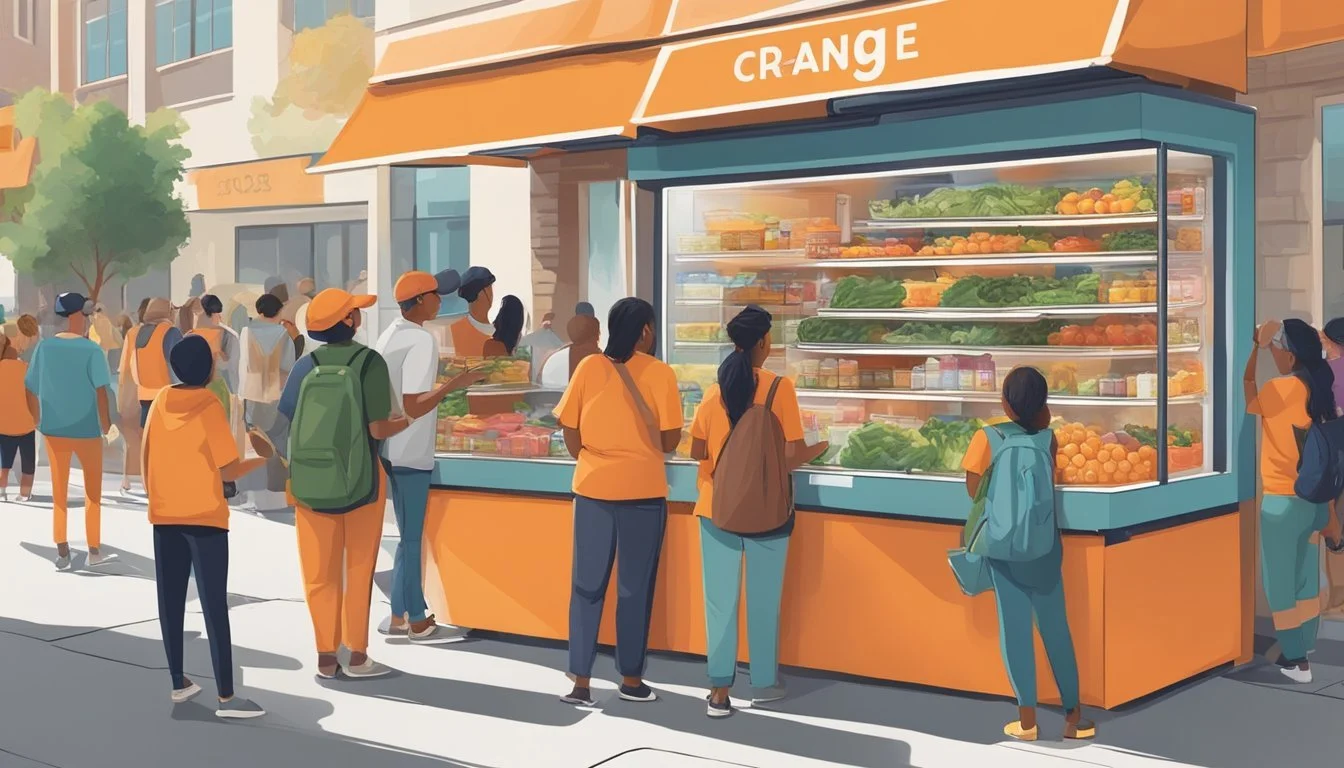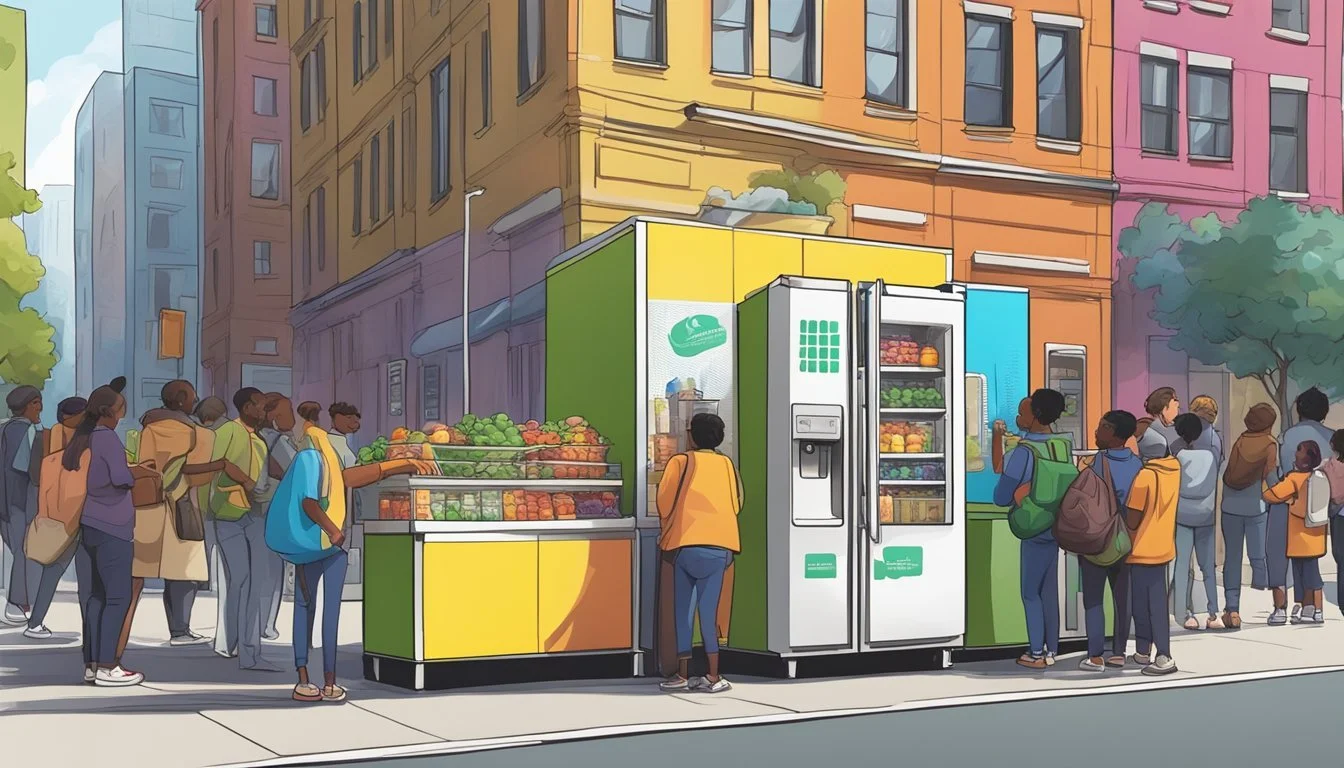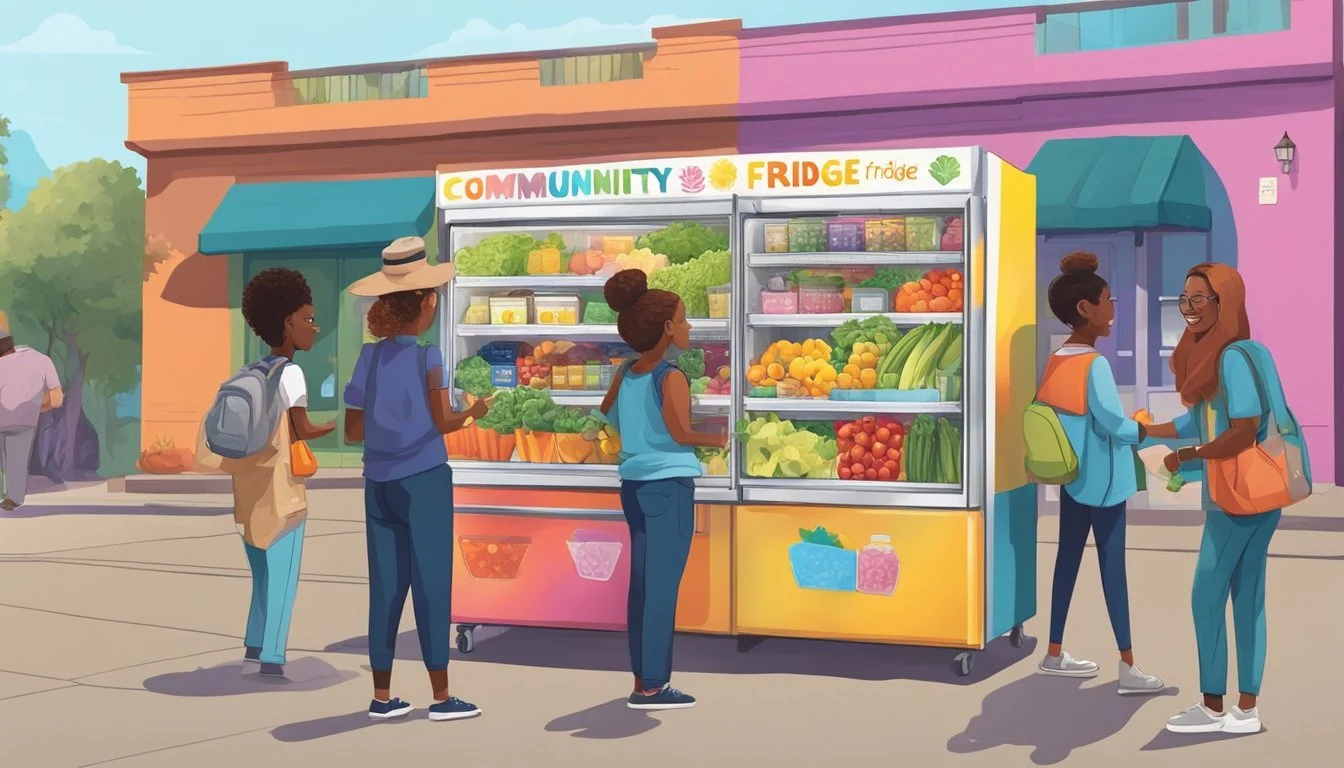Orange, CA Community Fridge
Nourishing Neighborhoods with Shared Resources
Community fridges have emerged as a compassionate and practical approach to addressing food insecurity and reducing waste, with Orange, California, being no exception. These refrigerators, placed in accessible public spaces, allow for perishable food donations to be shared freely among members of the community. Not only do they help in providing food to those in need, but they also foster a sense of communal support and responsibility towards one another.
In Orange, the community fridge initiative supports the city's diverse population by offering a stigma-free way for residents to access food. Volunteers maintain the fridges, ensuring they are clean and stocked with good-quality, nutritious offerings. Both individuals and businesses contribute to the contents of the fridge, which demonstrates a collective effort to ensure no one goes hungry while promoting sustainability by minimizing food waste.
As the network of community fridges continues to grow, the city identifies new locations to extend its reach, making sure that all residents have access regardless of their socioeconomic status. This endeavor illustrates a strong commitment to mutual aid and the well-being of all community members, highlighting Orange as a model for other cities looking to establish similar programs that tackle food scarcity in an empowering and community-driven manner.
Concept and Purpose of Community Fridges
Community fridges, also known as "freedges," have emerged as a resourceful and compassionate approach to addressing food insecurity, fostering mutual aid, and reducing food waste within Orange, CA, and beyond.
Food Insecurity Awareness
Community fridges shed light on the prevalence of food insecurity. They act as visible, tangible symbols confronting the challenge that many individuals face in accessing enough nutritious food regularly. In Orange, CA, these fridges operate on the principle of take what you need, give what you can, recognizing the variant levels of food accessibility among different community members.
Mutual Aid and Community Support
Strongly rooted in the concept of mutual aid, community fridges facilitate a system of citizen-supported food sharing. People from all walks of life contribute to and benefit from the communal exchange of perishable goods and fresh produce. This practice not only provides direct aid but also strengthens community bonds, creating networks of support that extend beyond the scope of food.
Impact on Food Waste Reduction
Community fridges play a significant role in food waste reduction. By offering space for individuals and businesses to donate surplus items, they ensure that less food ends up in landfills. At the same time, the fridges provide an opportunity for people to share excess food, turning potential waste into a valuable community resource.
History and Development
The concept of community fridges, often termed as "freedges," has evolved from humble beginnings to a global movement. This section explores how "freedges" came into existence, spread to urban centers, and eventually found their way across international borders.
Origins of Freedges
The "freedge" movement originated as an effort to combat food insecurity and waste. The underlying principle is to provide a shared space where community members can leave surplus food for others who need it. The first known community fridge was set up in Berlin, Germany, in 2012, actively promoting sustainability and mutual aid.
Expansion to Urban Areas
Los Angeles and New York City are among the urban hubs where community fridges quickly gained traction. Fueled by high levels of food waste and the growing needs of a diverse urban population, community fridges became a practical response. They offer a decentralized approach to food insecurity, directly engaging local residents and businesses in the process of food sharing.
Notable Urban "Freedges":
Los Angeles, CA: Known for its health-conscious population, LA saw the emergence of "freedges" as part of its broader sustainability efforts.
New York City, NY: A network of community fridges rapidly spread across the boroughs, facilitated by grassroots organizations and increased community participation.
International Spread
As the "freedge" idea took root in urban areas, it began to cross borders, spreading to various countries in Europe and beyond. The growth was partly due to social media, which helped raise awareness and inspire communities worldwide to adopt the initiative.
Global Reach: Key Points
"Freedges" are now present in European cities, reinforcing the region's dedication to sustainable community practices.
The concept is adaptable, allowing "freedges" to serve the unique needs of diverse communities across the globe, reflecting local customs and food sharing traditions.
Operation and Management
The success of the Orange, CA Community Fridge hinges on a robust operation and management structure, with a strong emphasis on volunteer coordination, local business partnerships, and adherence to health and safety regulations.
Volunteer Coordination
The Orange Community Fridge operates primarily on the dedication and effort of volunteers. These individuals are responsible for a range of activities including stocking the fridge, cleaning, and ensuring food donations comply with food codes. Volunteer roles are clearly defined, and there is a structured schedule in place to ensure the fridge is monitored and maintained regularly.
Partnerships with Local Businesses
Local businesses, particularly restaurants, play a vital part in the community fridge's operation. These partnerships are essential to provide a steady supply of nutritious food options. Restaurants are encouraged to donate surplus food, which not only contributes to the fridge's stock but also helps in reducing food waste. These partnerships are fostered with a mutual understanding of the local food codes and the shared goal of serving the community.
Health and Safety Regulations
The community fridge adheres strictly to the health and safety regulations set forth by the local health department. Volunteers are trained in proper food handling techniques, and all donated foods are checked to meet safety standards. The fridge is regularly cleaned and maintained to ensure it remains a safe and hygienic resource for the community.
By focusing on these key operational areas, the Orange, CA Community Fridge endeavors to provide accessible, free food to those in need while ensuring safety and efficiency in its day-to-day management.
Locations and Accessibility
The growth of community fridges across various regions reflects the increasing efforts to combat food insecurity and reduce waste. These fridges are generally easy to access, strategically placed in neighborhoods to support individuals and families in need.
Los Angeles Network of Community Fridges
In Los Angeles, the network has expanded significantly, now boasting a variety of accessible locations. Notably, Mid-City, Long Beach, and Highland Park have community fridges that are integral to the local efforts. For instance:
Mid-City: Near central L.A., providing accessible food options for the dense urban population.
Long Beach: Positioned to serve coastal communities, integrating with local initiatives.
Highland Park: Situated in the northeast corridor, fostering strong community support and engagement.
New York City Initiatives
New York City's approach is community-centric with multiple fridges dispersed throughout. Key areas include:
Little Amsterdam Coffee: This establishment hosts a community fridge, supporting the local food sharing movement.
NYU Freedge: Located near the New York University campus, this fridge serves as a valuable resource for students and residents alike.
NYC currently has an estimated 120 community fridges, which includes ones supported by other organized groups such as Freedge.
Other Notable Locations
The concept of community fridges has extended beyond these two urban hubs. Examples of other initiatives:
FoCo Freedge: Part of a broader network, operating to support local communities in different states.
CSU Freedge: Many college campuses, like those of the California State University, have adopted this model to support their students.
Each location aims for maximum accessibility and is typically available to the public at all times.
Locations and the community efforts behind them prove that grassroots initiatives can have a meaningful impact on reducing hunger and promoting mutual aid within a city.
Community Fridge Movement During the Pandemic
During the COVID-19 pandemic, community fridges emerged as a crucial resource in battling food insecurity. The Orange, CA community fridge is part of this wider movement, reflecting a responsive and adaptive support system for those in need.
Responding to Increased Needs
As the coronavirus pandemic resulted in mass unemployment and strained traditional emergency food systems, community fridges like those in Orange, CA, became vital. They operate on a simple principle: take what you need, leave what you can. Food distribution through these fridges is designed to be barrier-free and accessible to all, without the need for paperwork or qualification.
Accessibility: 24/7 availability to meet the unpredictable schedules of those facing food scarcity.
Community Involvement: Encourages locals to donate food, fostering a sense of community and mutual aid.
Challenges and Adaptations
While community fridges have seen a surge in use, they also face challenges. Ensuring food safety, maintaining a consistent supply of donations, and protecting the fridges from vandalism became paramount. Adaptations were necessary to continue the service.
Food Safety: Regular cleaning schedules and monitoring to ensure perishable goods are safe to consume.
Supply Challenges: Networks of volunteers coordinate to keep fridges well-stocked and to relay real-time information on inventory.
Donating and Receiving Food
In Orange, CA, the Community Fridge initiative is a robust program designed to facilitate the donation of fresh food to the food-insecure populations. It operates on a "take what you need, leave what you can" basis, encouraging community involvement and support.
Donation Guide
Individuals and businesses can donate food to the Community Fridge. Here are specific guidelines to ensure the safety and quality of food provided:
Acceptable Items for Donation:
Fresh fruits and vegetables
Packaged foods with a visible expiration date and unopened
Non-perishable food items
Items Not Accepted:
Opened packages or homemade meals
Perishable items that require refrigeration, such as dairy or meat, unless the fridge is equipped to handle such items
Alcohol or any non-food items
Packing and Hygiene:
Food must be clean and well-packaged.
Donors should ensure hands and surfaces are sanitized before handling donations.
Where to Donate:
Community Fridge locations are generally accessible 24/7.
Specific drop-off protocols may vary; check with the local Community Fridge organizers for details.
Access for the Food-Insecure
The Community Fridge is open to anyone in need of food, no questions asked. To access free food, individuals can visit the fridge location and take what they require.
Guidelines for Taking Food:
Only take as much as you need, to leave enough for others.
Check the expiration dates on packaged goods.
Refrain from taking more fresh fruits and vegetables than can be consumed quickly to prevent waste.
The Community Fridge is an essential resource in combating hunger and ensuring that those who face food insecurity have access to nutritious food. Through community contribution and responsible usage, the Community Fridge addresses immediate needs while fostering a spirit of sharing and support.
Local Impact and Success Stories
The Orange, CA Community Fridge has notably strengthened the local community with its initiatives in food justice and sustainability. These efforts have contributed to a more resilient and supportive environment for residents.
Community Empowerment
The Community Fridge initiative in Orange, CA stands as a powerful example of collective agency. Volunteers and local organizations have joined forces to implement food justice, directly tackling issues of hunger and access to nutritious food. These fridges offer free food to anyone who needs it, embodying the "take what you need, leave what you can" philosophy. Success stories are many, including the empowerment of individuals to reach the top of their personal food security goals.
Notable Achievements:
Reduction in local food insecurity levels.
Increased involvement of citizens in volunteer activities.
Sustainability Efforts
Sustainability is a core component of the Orange, CA Community Fridge project. The program reduces food waste by redistributing excess food from businesses and households. This initiative has resonated throughout the community, with residents actively participating and supporting the cause, thus promoting a culture of sustainability.
Key Sustainable Practices:
Diverting edible food from landfills.
Encouraging the sharing of resources within the community.
Guidelines and Best Practices
When establishing and operating a community refrigerator, adhering to set guidelines and best practices is essential for success. These ensure that the initiative complies with food codes, maintains high safety standards, and fosters a place where everyone feels welcome.
Setting Up a Community Fridge
Location & Partnerships: Partnerships with local businesses or organizations, such as Play Nice LBC, can provide a secure and accessible location for the community refrigerator. They should be situated in areas that are easily reachable for those who need them.
Compliance with Local Food Codes: It is essential that organizers familiarize themselves with, and follow, all relevant food safety regulations to ensure the community refrigerator operates within legal requirements.
Food Item Guidelines Produce and Non-perishables Should be fresh and safe for consumption; abide by state or local regulations. Prepared Foods Must comply with local health departments' guidelines for public distribution.
Community Engagement: Active engagement with the community is crucial, as it encourages local ownership and the sustainability of the fridge. Organizers should communicate the purpose and usage of the fridge clearly to potential users and contributors.
Maintaining a Safe and Inclusive Space
Health and Safety: Regular cleaning schedules must be established to ensure that the space remains sanitized and safe for everyone. Volunteers should be trained in proper food handling and safety procedures to prevent cross-contamination.
Clear Labeling: All items should be clearly labeled with dates and contents. This includes expiration dates to avoid health risks associated with spoiled food.
Inclusivity and Respect: The community fridge should be a space where everyone feels welcome. This means it must have clear guidelines encouraging respectful behavior and shared community responsibility. Users are encouraged to 'take what you need, give what you can' to maintain a spirit of mutual aid.
Notable Community Fridge Projects
Community fridge projects serve as a testament to the local efforts in Orange, CA, aimed at addressing food insecurity. They are accessible to the public, focusing on fresh and nutritious food that's freely available to anyone in need.
(N)ice Box
(N)ice Box operates as a local community fridge initiative designed to provide perishable and non-perishable food items. They maintain a principle that food should be accessible to everyone, which is reflective in how the community is encouraged to both donate and take food as needed. (N)ice Box often carries essentials such as fruits, vegetables, dairy, and bread.
Garage Cafe
Garage Cafe represents another significant effort in the landscape of community fridges. Unique for its location in a converted garage space, this project also relies on local support and food donations. The goal is to alleviate hunger in the community by stocking Garage Cafe with food staples, encouraging a culture of sharing and mutual aid among residents.
Future Directions
The Orange, CA Community Fridge initiative is poised for significant growth, focusing on expanding reach and building robust connections with local policy makers and community organizations.
Expansion and Networking
The initiative aims to increase the number of freedges within Orange and neighboring cities to address the needs of those facing food insecurity, including the homeless population. These community fridges will work closely with the successful model established by the Los Angeles Community Fridges network. The key strategies are:
Identifying key locations: Sites with high foot traffic and accessibility for all community members.
Building partnerships: Collaborating with local businesses and non-profits to secure sustainable food sources and logistical support.
Policy and Community Engagement
Policy engagement involves advocating for local government support to embed community fridges into the city's framework for combating hunger and reducing food waste. Community engagement centers around the following actions:
Awareness campaigns: To inform and involve the public, leveraging social media and local events.
Volunteer programs: Facilitating opportunities for residents to contribute, ensuring the initiative's sustainability and fostering a sense of ownership.
By focusing on these strategic areas, the Orange, CA Community Fridge project aims to extend its impact and foster a more food-secure future for all local residents.


